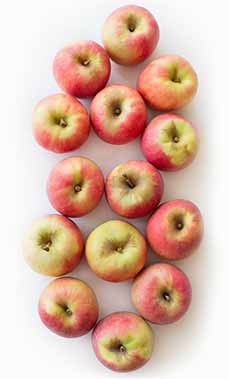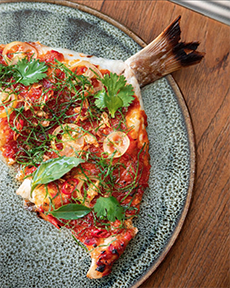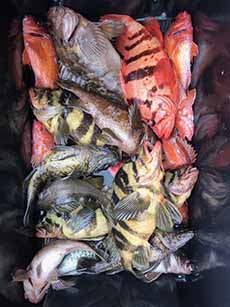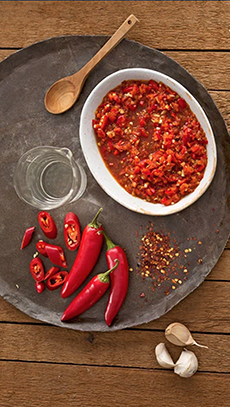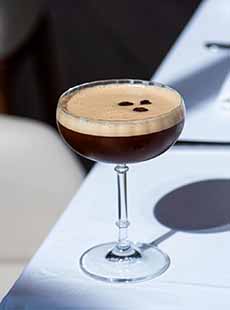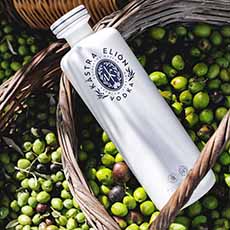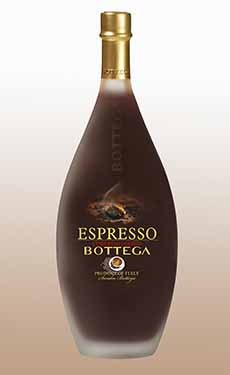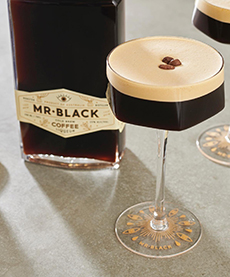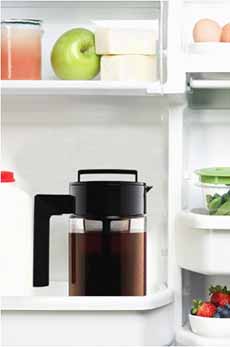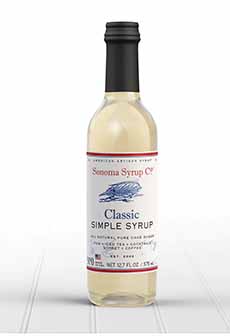|
We like everything made by San Francisco chocolatier, Michael Recchiuti. While we have enjoyed many a box of beautiful bonbons, artisan chocolate bars, and chocolate-covered caramels, we also love his take on peanut butter cups.
His Peanut Butter Pucks are a wonderful treat.
If you’re a fan of Reese’s but think there could be a more glorious peanut butter cup—one made with superior chocolate and better peanut butter—Recchiuti’s Peanut Butter Pucks may be a dream come true.
Don’t concern yourself that Recchiuti Peanut Butter Pucks are pricier than Reese’s: You only live once!
RECCHIUTI PEANUT BUTTER PUCKS
Peanut Butter Pucks are made with organic Valencia peanut butter folded into Recchiuti’s artisan dark milk chocolate and finished with a sprinkle of salt (photos #1 and #2).
Why Valencia peanuts? The Valencia has a sweet flavor and is the peanut of choice for all-natural peanut butter. An exclusive peanut, it accounts for less than 1% of U.S. peanut production.
More than 80% of the peanuts grown in the U.S. are a variety called runner peanuts. They are the peanuts used to make most of the peanut butter and PB confections like peanut butter cups. Here’s more about the four different types of peanuts grown in the U.S.
As for the pinch of salt: Salt is popularly used to enhance the flavor of artisan chocolate and caramels. See a broader explanation in the section below.
Each puck is .78 ounces (a Reese’s PB cup weighs .74 ounces).
Get your Peanut Butter Pucks here.
RECCHIUTI PEANUT BUTTER PEARLS
If you don’t want an entire Peanut Butter Puck, Recchiuti has packed the flavor into a little round nugget, the bite-size Peanut Butter Pearl (photos #3 and #4).
These dragees*, with a bit of crunch from the hard sugar coating, can be a daily indulgence with a cup of coffee, or for special use, e.g. as a garnish on ice cream, cakes, or cupcakes.
The little bites are a perfect ratio of peanut butter to chocolate.
Get your Peanut Butter Pearls here.
> The history of peanut butter.
> The history of peanut butter cups.
> The history of peanuts.
> The history of chocolate.
PEANUT & PEANUT BUTTER HOLIDAYS
More occasions to treat yourself to Peanut Butter Pucks and Peanut Butter Pearls:
January 24: National Peanut Butter Day
March 1: NatNational Peanut Month
March 8: National Peanut Cluster Day
April 2: National Peanut Butter And Jelly Day
May 18: I Love Reese’s Day
June 12: National Peanut Butter Cookie Day
September 13: National Peanut Day
November: National Peanut Butter Lover’s Month
November 20: National Peanut Butter Fudge Day
SALTED CARAMEL & SALTED CHOCOLATE
The salted caramel, which became a hit in the U.S. at the beginning of this century, was popularized in 1977 by the French pastry chef Henri Le Roux. In the 1960s, after apprenticing at his parents’ pastry shop in Pont-l’Abbé, a commune in Brittany in northwestern France, he went to school in Switzerland to study candy making.
He returned to Brittany to open a confectionary store, Maison Le Roux, in the commune of Quiberon. This original store has been joined by a number across France, including four in Paris.
Brittany is known for its fine salted butter, and in an attempt to offer something different, Le Roux devised a salted butter caramel with crushed nuts, using Breton demi-sel (lightly salted) butter instead of the unsalted butter used to make conventional caramels.
The result: caramels au beurre salé, caramels with salted butter.
The crushed nuts were Dauphiné walnuts, Piedmont hazelnuts, and Valencia almonds.
His caramels were named the “Best Confectionery in France” (Meilleur Bonbon de France) at the Paris Salon International de la Confiserie in 1980. Salted caramels took off across France. Here’s more of his story.
In the late 1990s, the Parisian pastry chef Pierre Hermé introduced salted butter and caramel (i.e., salted caramel) macaroons. By 2000, high-end chefs started to add a bit of salt to both their caramel and chocolate recipes, including salted caramel sauce for ice cream and other desserts.
The concept jumped across the pond, and salted caramel became the trend in the U.S. and elsewhere. Just about every artisan chocolatier sold fleur de sel caramels, using the special French sea salt. Fine chefs quickly adopted the concept and began combining sea salt with a variety of sweets, including caramel and chocolate.
As with many food trends, salted caramel quickly became an obsession of foodies. American chocolatiers made them enrobed in chocolate. President Barack Obama mentioned a fondness for Fran’s Salt Caramels, covered in chocolate and topped with French grey salt or smoked salt.
In 2008 the flavor leapt into the mass market, first with Häagen-Dazs salted caramel ice cream and Starbucks salted caramel hot chocolate (and subsequently, coffees).
Next came hundreds of products, found everywhere from supermarkets to small stores to big discounters: salted caramel added to everything from protein bars to vodka [source]. The flavor has retained its popularity.
What About Salted Chocolate?
Pierre Hermé is credited with being the first to make salted chocolate. He sprinkled fleur de sel on chocolate, also in the late 1990s. Later came his scrumptious chocolate and sea salt cookies.
As with salted caramels, artisan chocolatiers in the U.S. and beyond followed suit. Top pastry chefs added crunchy crystals of sea salt to everything from chocolate caramel tarts to molten chocolate “lava” cakes. Magazines printed recipes for salted chocolate chip cookies.
Why Are Salted Sweets So Popular?
Salt is a natural flavor enhancer that brings out the flavor in all foods, including sweet foods. That’s why you’ll always see a pinch of salt in recipes for cakes, cookies, and pies.
In confections, salt adds a counter-dimension to the sweetness of both caramel and chocolate and suppresses the bitterness of dark chocolate.
Salt balances out flavors and brings out subtle nuances. An easy example to test is how critical to adding flavor to the water used to boil foods like pasta, potatoes, and rice.
While we don’t regularly salt our food, we never boil a pot of water without a tablespoon or two of it.
________________
*A dragée (drah-zhay) originally referred to sugar-coated, so one did not have to swallow a “bitter pill.” Today, it refers to a small piece of candy enclosed in a hard sugar shell. Jordan almonds are a classic example, and at the other extreme, so are M&M’s. The tiny hard gold and silver balls made from sugar, that are used to decorate cakes, cookies, and confections, are another example of dragées. They are coated in edible gold or silver. Dragée’s origin word, in ancient Greece, tragema, refers to dried fruits or other sweetmeats.
|

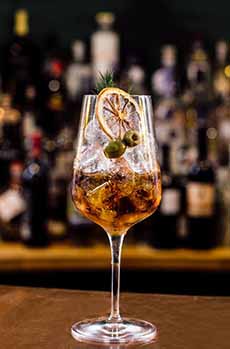
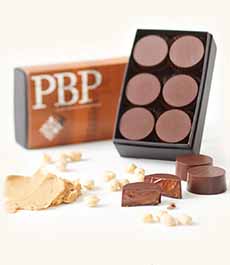
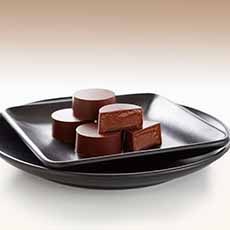
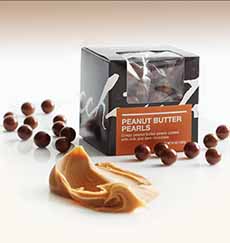
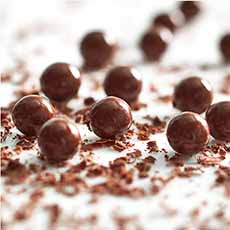
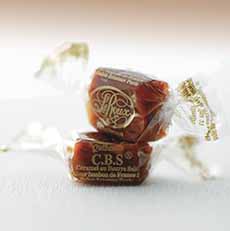
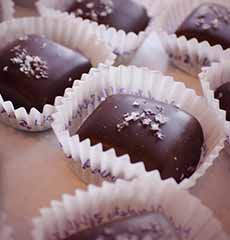
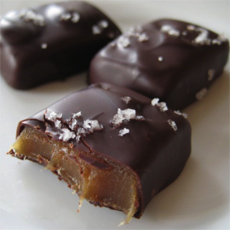
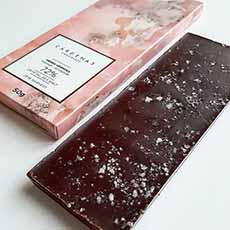
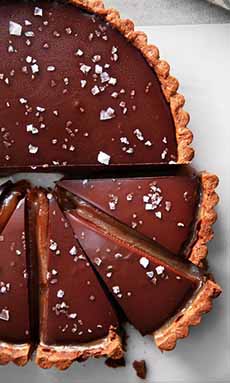
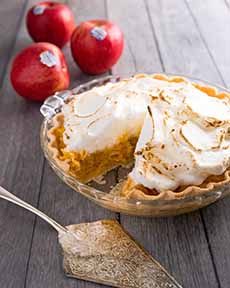

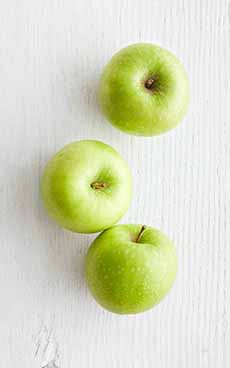 Granny Smith Apples[/caption]
Granny Smith Apples[/caption]